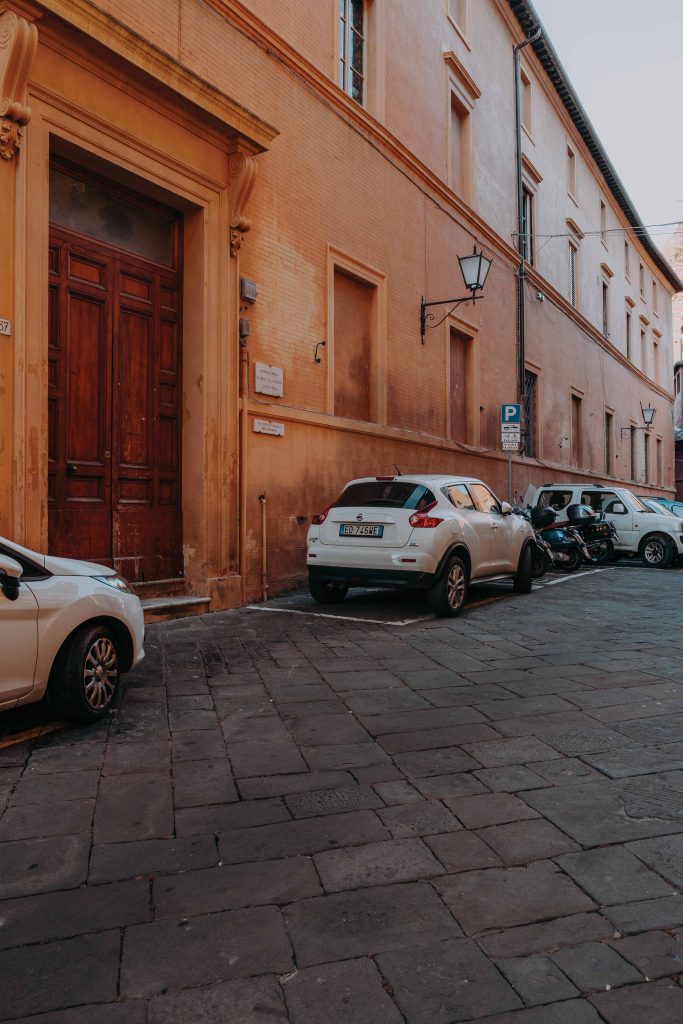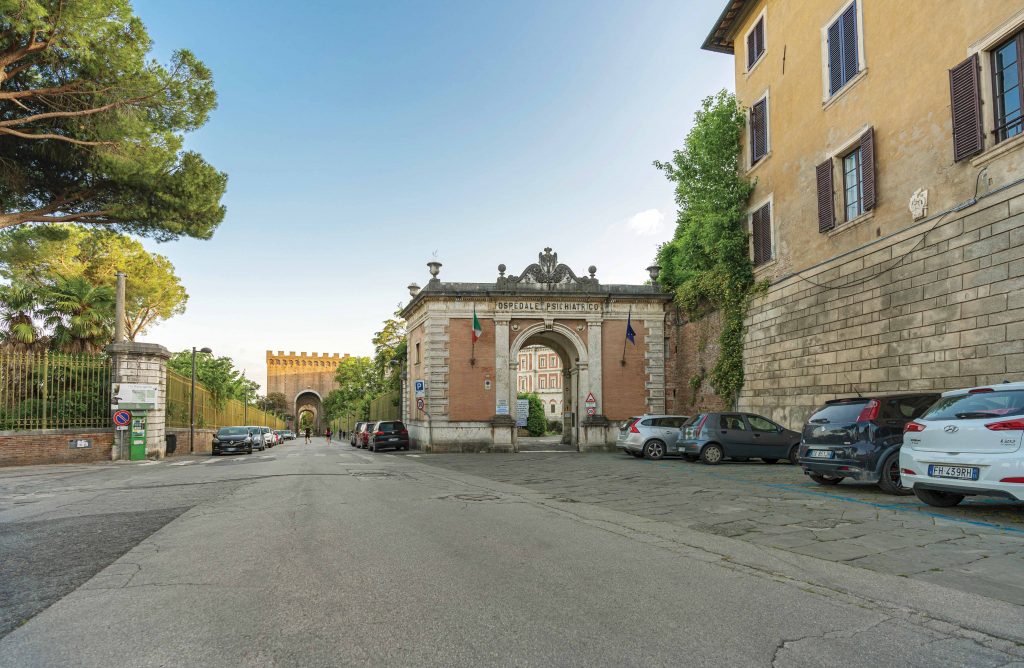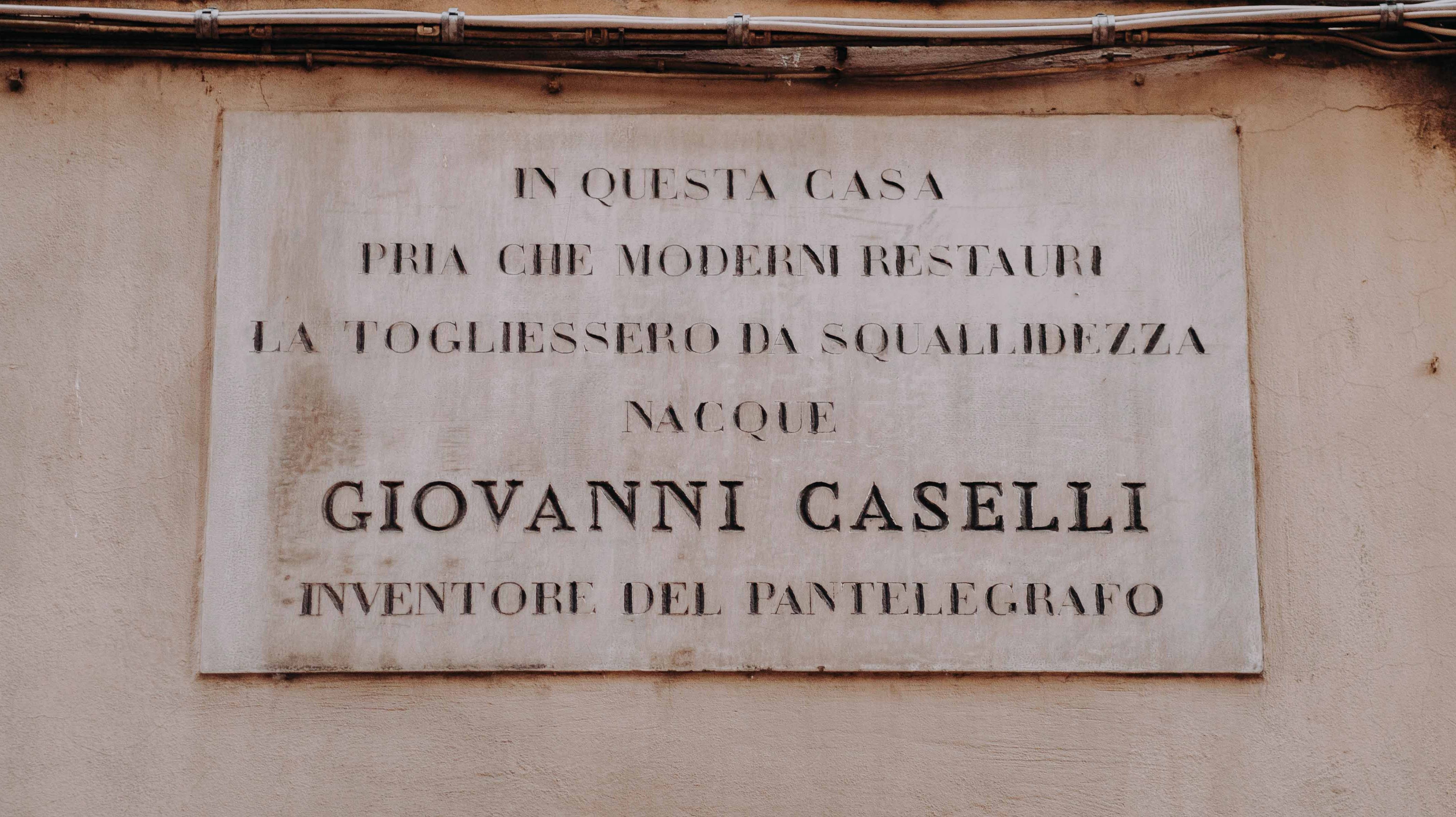3.3 The Nineteenth century, century of innovation
For Siena, the nineteenth century was a period of economic and demographic crisis, but it was also the century when many enlightened people tried to bring progress and new ideas to the city in their respective spheres of interest. Galgano Parenti made Siena world-famous through his panforte (Sienese fruit-and-nut confections); Giovanni Caselli invented the pantelegraph, forerunner of the modern fax; Policarpo Bandini modernised Sienese transport with the building of the Siena-Empoli railway, together with the engineer Giuseppe Pianigiani; Tommaso Pendola made Siena a beacon for the teaching of deaf-mutes; and Carlo Livi promoted the creation of a modern, efficient mental hospital that adopted new forms of therapy.

Galgano Parenti
Antica Farmacia del Campo, 26 Il Campo
In 1829, Giovanni Parenti founded his panforte factory in the pharmacy (pharmacies were also spice shops) in Piazza del Campo. It was later developed by his son, Galgano, who began to have the glazes on the popular confections decorated with Sienese views and monuments.
From the end of the nineteenth century, the principal painters and designers of the local Accademia di Belle Arti (Academy of Fine Arts) created the decorations on the panforte, now painted on the boxes in which they are sold. This custom carried the image of the city all over the world and contributed to Siena’s success as a tourist destination.
The furnishings of the period have been preserved inside the pharmacy, and on the glass of the medicine shelves you can still see the portraits of Giovanni and Galgano Parenti, as well as the slogan “Fabbrica di Panforte” (Panforte Factory).

Policarpo Bandini and Giuseppe Pianigiani
Chiesa di San Giuseppe and 103 Via Duprè
Policarpo Bandini was an eclectic personality; he got his degree in chemistry and studied natural sciences, but his real gift was his great talent for business. An able politician, he also founded the Banca Senese (Bank of Siena) in 1840 and took on the teaching of the poor, founding one of the first kindergartens in Siena. But his greatest effort towards modernising Siena was the formation of the Società Anonima della Strada Ferrata Centrale Toscana (Limited Company of the Central Tuscan Railway), with the aim of building a railway line from Siena to Empoli. In this he was greatly helped by the Sienese engineer Giuseppe Pianigiani, an expert in the subject. The work was expensive and complex but the obstacles were overcome brilliantly, and the Sienese railway remains unaltered today. In the church of the Capitana dell’Onda Contrada there is a tombstone commemorating his work.

Tommaso Pendola
37 Via Tommaso Pendola
Tommaso Pendola, a Scolopian priest, came to Siena in 1821 as a professor at the Collegio Tolomei. He very quickly became interested in educating deaf-mutes, who had not received any education until then. The methods he used, such as the oral method, were among the most innovative of the day. In a short time his Istituto per i Sordomuti (Deaf-Mute Institute) became the national reference point for the subject. He also concerned himself with helping the youngsters find work, for example through the creation of a printing house that continued to operate for many years.
Giovanni Caselli
17 Via Banchi di Sotto
Giovanni Caselli, inventor of the pantelegraph, was born in this building, as a plaque on the front of it commemorates. Caselli studied physics in Florence and conducted his studies a long way from Siena, trying to find finance for his most important invention, a system for transmitting texts and graphics that he called the pantelegraph: a forerunner of the modern fax.
In 1867, Caselli returned to Siena, where he held the post of director of the city’s schools, and many of his documents are now preserved in the Biblioteca Comunale degli Intronati (Public Library of the Intronati).

Carlo Livi
56 Via Roma
From 1818 onwards, Siena had a mental hospital for the restraint of so-called “mad people” in the old convent of San Niccolò, managed in the traditional way by the Società di Esecutori di Pie Disposizioni (Society of Executors of Pious Legacies), one of Siena’s oldest lay Companies.
In 1858, Carlo Livi was chosen as director of the mental hospital. He was a doctor with specific training in psychiatry. As a result he spent several months visiting Italian mental hospitals, returning with the knowledge that the sick needed not only to be restrained but also to be cured. He therefore demanded that Siena’s mental hospital be completely renovated, including its buildings, promoting the choice of the great Francesco Azzurri as architect and the building of separate wards. Creating separate zones over a large area for work, recreation and treatment would, in his opinion, make the patients’ life more normal and therefore improve their health. For years, thanks to Livi’s insight, Siena’s mental hospital was considered one of the most advanced in Italy.

Texts edited by: Martina Dei
Editorial coordination: Elisa Boniello e Laura Modafferi
Photos: Archivio Comune di Siena, Sabrina Lauriston e
Leonardo Castelli
Graphic design: Michela Bracciali
